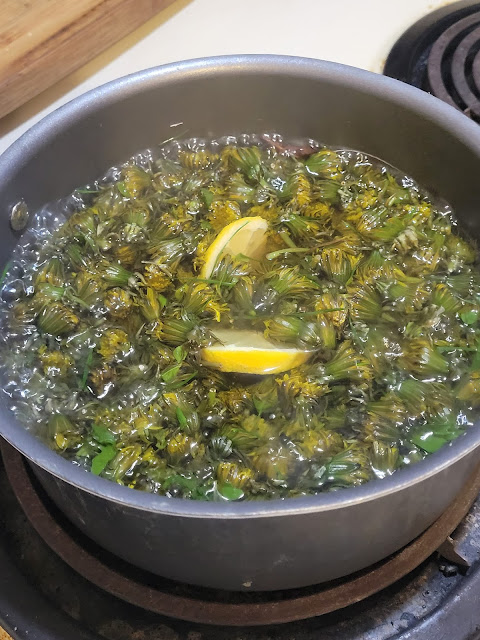Savor the Season: A Bountiful Guide to Homemade Vegetable Soup for Year-Round Delights
There's something undeniably comforting about a steaming bowl of vegetable soup, especially when it's made from scratch with love and care.
In this article, we'll take you on a culinary journey as we explore the art of making a large batch of vegetable soup. With a medley of vibrant vegetables and a touch of spice, this soup promises to warm your soul and satisfy your taste buds. Whether you're a seasoned cook or a novice in the kitchen, join us as we dive into the process of creating a delicious, homemade vegetable soup that will leave you with an abundance of flavors to savor throughout the year.
Recipe: Homemade Vegetable Soup
Ingredients:
- - Crushed tomatoes
- - Diced tomatoes
- - Green beans
- - Okra (cut)
- - Purple hull peas
- - Lima beans
- - Speckled butter beans
- - Corn
- - Peas and carrots mix
- - 1 can of Rotel (optional, for added spice)
- - Canning salt (1 teaspoon per jar)
Instructions:
1. Begin by preparing your vegetables. Wash and chop them according to your preference. You can adjust the quantities based on your desired ratio of vegetables.
2. In a large pot or dish pans, combine the crushed tomatoes, diced tomatoes, green beans, okra, purple hull peas, lima beans, speckled butter beans, corn, peas and carrots mix, and the optional can of Rotel.
3. Bring the mixture to a simmer over medium heat and let it cook for about 10 minutes. This will help the flavors meld together.
4. While the soup simmers, prepare your canning jars by washing them thoroughly and sterilizing them in boiling water or using a dishwasher cycle.
5. Pack the simmered vegetable soup into the jars, leaving about 1 inch of headspace at the top.
6. Add 1 teaspoon of canning salt to each jar. This helps preserve the flavors and enhances the taste.
7. Wipe the jar rims clean to ensure a proper seal.
8. Place the lids and rings on the jars, ensuring they are tightly secured.
9. Prepare your pressure canner according to the manufacturer's instructions.
10. Carefully place the filled jars into the pressure canner, making sure they are properly spaced and not touching each other.
11. Close the pressure canner securely and set the pressure to 10 pounds.
12. Process the jars at 10 pounds of pressure for one hour and 15 minutes. This is the suggested time by Ball, a trusted source for canning guidelines.
13. After the processing time has elapsed, turn off the heat and allow the pressure canner to depressurize naturally.
14. Carefully remove the jars from the canner and place them on a heat-resistant surface to cool.
15. Once cooled, check the seals by pressing down on the lids. The lids should be concave and should not move or make a popping sound. Any unsealed jars should be refrigerated and consumed promptly.
16. Label and store the sealed jars in a cool, dark place, ensuring they are kept upright.
Serving Suggestions:
- Heat a jar of vegetable soup on the stovetop or in a microwave-safe dish for a comforting meal on a chilly day.
- Serve the soup with a side of crusty bread or homemade cornbread for a complete and satisfying meal.
- Customize the flavors by adding your favorite herbs and spices, such as basil, thyme, or bay leaves.
- Share the bounty by gifting jars of homemade vegetable soup to friends and family, spreading the warmth and love of your kitchen.
Preparing a large batch of homemade vegetable soup is an adventure that results in a bounty of delicious flavors to enjoy throughout the year.
By combining an array of vibrant vegetables and simmering them to perfection, you create a hearty and comforting soup that warms both the body and the soul. With the simple process of pressure canning, you can preserve the goodness of this vegetable medley, ensuring that your homemade soup is always within reach. So gather your fresh vegetables, dust off your pressure canner, and embark on a culinary journey that will fill your pantry with jars of homemade vegetable soup, ready to be enjoyed whenever a nourishing bowl is needed.






















Comments
Are the purple and butter beans already precooked?
ReplyDeleteDo you have to have a pressure canner?
ReplyDelete